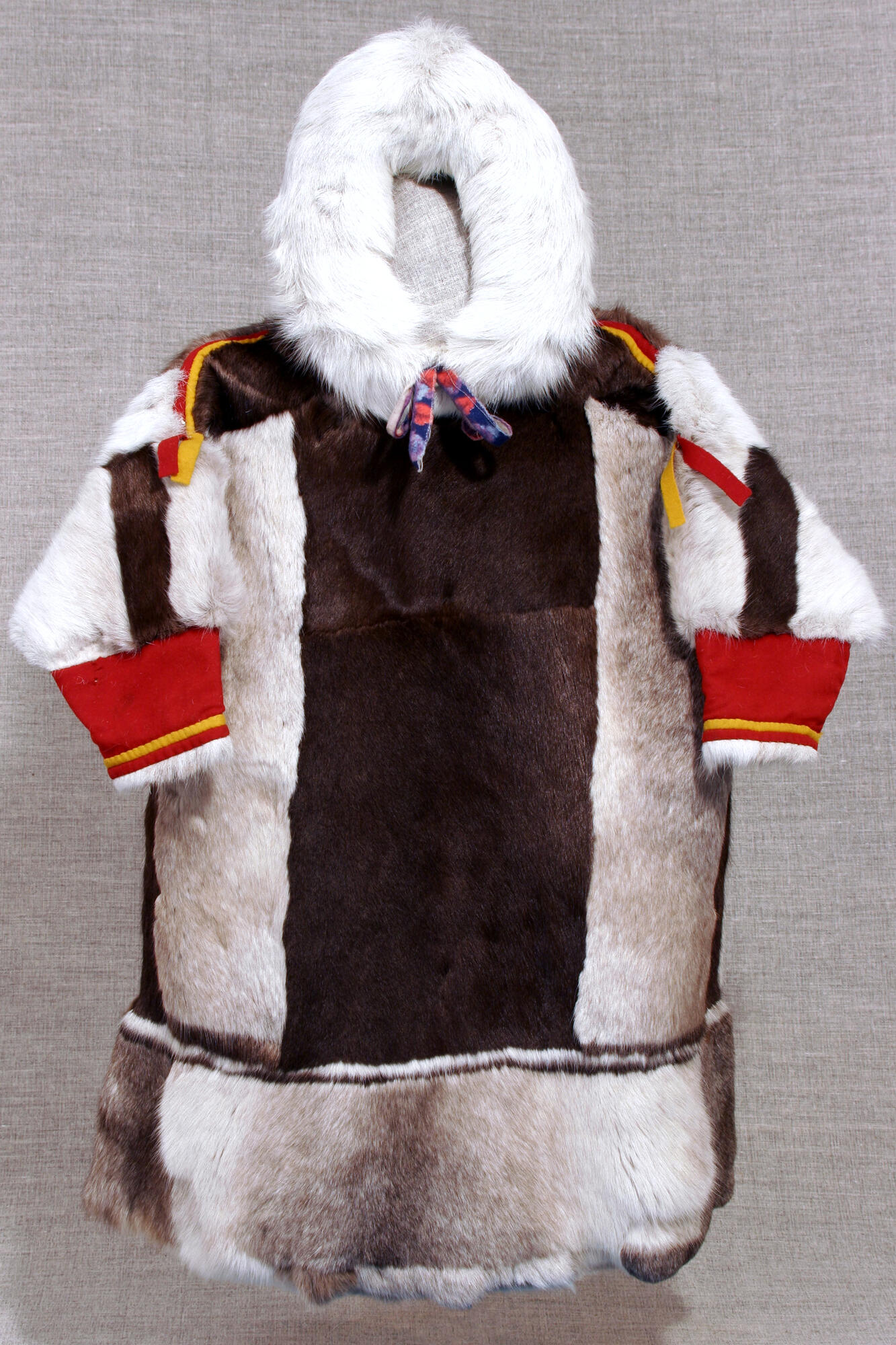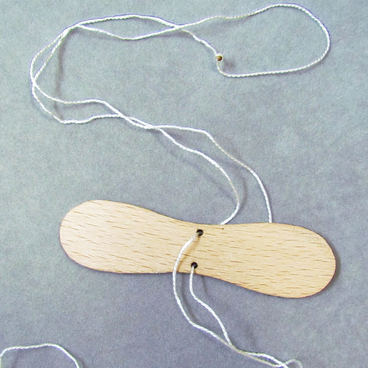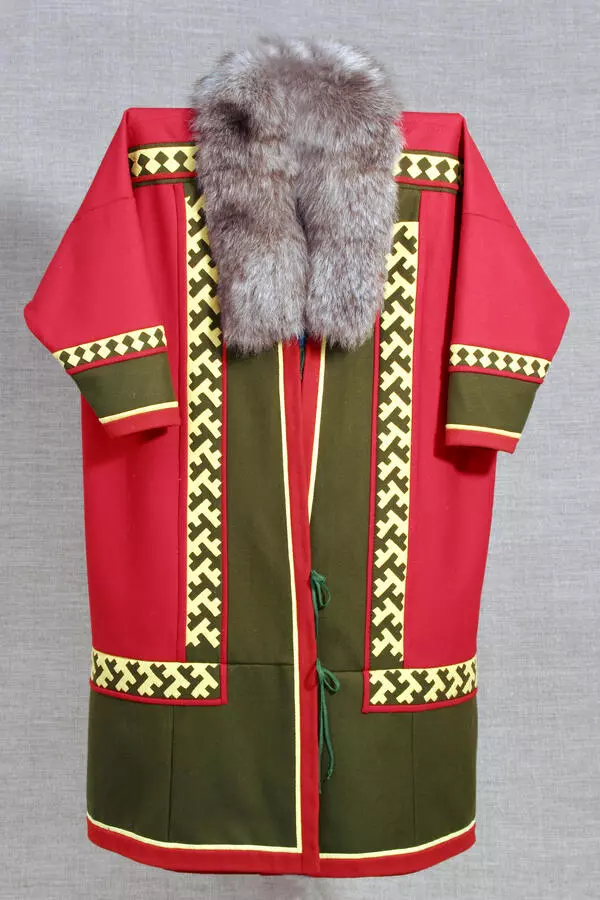The climate of the Western Siberia is harsh with extremely cold winters and piercing winds. That is why the nomadic Nenets peoples has always cared about their clothing. It must be comfortable, warm and windproof, suitable for staying outdoors for a long time.
Traditional Forest Nenets outfit is made of processed reindeer skins and fur as it protects from wind and chill perfectly. Only women sew clothes. They use special threads made of reindeer legs and back tendons. Up to the age of three or four years boys and girls wear the same clothes. A fur garment with a hood made for them reminds of a male adult version of a coat. As children grow up, girls get their loose yagUshkas, boys have mAlitsas with fur inside. This clothing is well suited for the harsh Far North weather conditions. Yet when the frosts are most severe, even a warm fur coat with a hood and sewn-up mittens isn’t enough to keep the warmth. In such a case a “goose” coat is put over it.
A “goose” coat is a warm coat tailored with fur out. It is all close, a wide strip of fur is attached to the bottom. This coat is most frequently made of a white “neblyui” fur, a two or three month old reindeer calf. But inlays of other colors can also be used. Unlike a malitsa, a goose has no attached mittens but there’s always a hood lined with a long-haired reindeer fur. Reindeer head skin is used for the back part of the hood.
To decorate this kind of children clothing the Nenets women use strips of red or yellow or green color, as they symbolize the life and the sun. The fur of the cuffs is turned inside, while outside there’s a wide strip of cloth. A goose is worn without a belt. It is an outdoor garment, so it’s usually left outside a chum on a nArta, a traditional Nenets sledge.
The boy’s goose in the exposition of Gubkinsky Museum of the Development of the North was made by the Forest Nenets Tatyana Pyak, a Rychi-Yakha camp resident.
Traditional Forest Nenets outfit is made of processed reindeer skins and fur as it protects from wind and chill perfectly. Only women sew clothes. They use special threads made of reindeer legs and back tendons. Up to the age of three or four years boys and girls wear the same clothes. A fur garment with a hood made for them reminds of a male adult version of a coat. As children grow up, girls get their loose yagUshkas, boys have mAlitsas with fur inside. This clothing is well suited for the harsh Far North weather conditions. Yet when the frosts are most severe, even a warm fur coat with a hood and sewn-up mittens isn’t enough to keep the warmth. In such a case a “goose” coat is put over it.
A “goose” coat is a warm coat tailored with fur out. It is all close, a wide strip of fur is attached to the bottom. This coat is most frequently made of a white “neblyui” fur, a two or three month old reindeer calf. But inlays of other colors can also be used. Unlike a malitsa, a goose has no attached mittens but there’s always a hood lined with a long-haired reindeer fur. Reindeer head skin is used for the back part of the hood.
To decorate this kind of children clothing the Nenets women use strips of red or yellow or green color, as they symbolize the life and the sun. The fur of the cuffs is turned inside, while outside there’s a wide strip of cloth. A goose is worn without a belt. It is an outdoor garment, so it’s usually left outside a chum on a nArta, a traditional Nenets sledge.
The boy’s goose in the exposition of Gubkinsky Museum of the Development of the North was made by the Forest Nenets Tatyana Pyak, a Rychi-Yakha camp resident.





